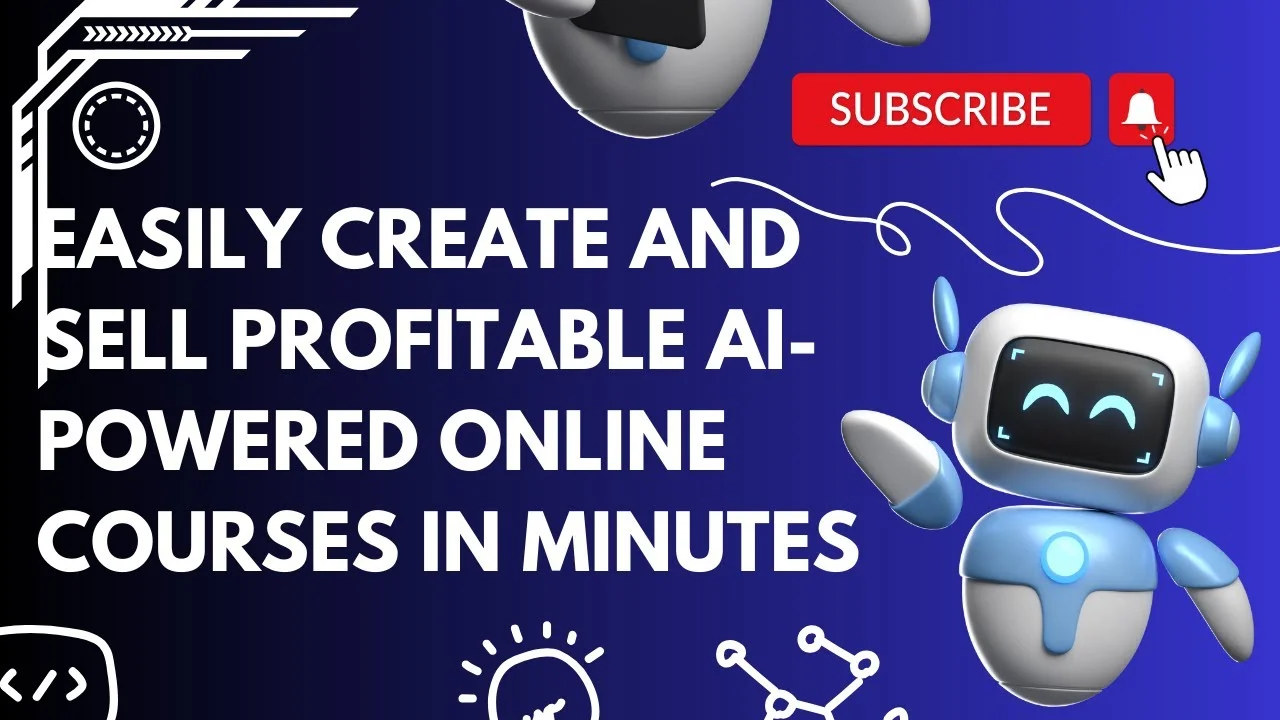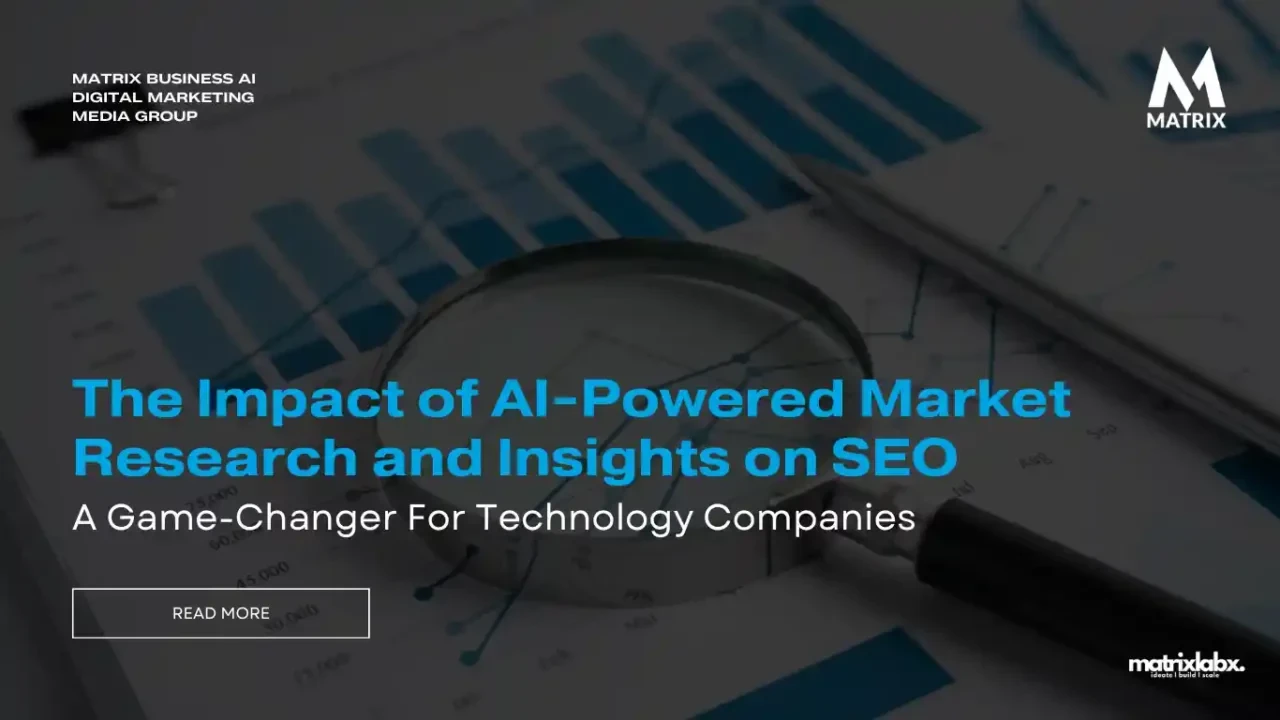AI Tools for Data Analysis and Visualization
{ "article": [ { "title": "AI Tools for Data Analysis and Visualization", "meta_description": "Transform raw data into actionable insights with powerful AI tools for analysis and visualization.", "content": "Transform raw data into actionable insights with powerful AI tools for analysis and visualization. In today's data-driven world, the ability to quickly and accurately analyze vast amounts of information is no longer a luxury but a necessity. Whether you're a small business owner trying to understand customer behavior, a marketing professional optimizing campaigns, or a researcher sifting through complex datasets, AI-powered data analysis and visualization tools are revolutionizing how we interact with data. They democratize data science, making sophisticated analytical capabilities accessible to everyone, not just seasoned statisticians or data scientists.\n\n

Gone are the days of manually sifting through spreadsheets or writing complex code to find patterns. AI tools can process data at lightning speed, identify hidden correlations, predict future trends, and even suggest optimal strategies. This isn't just about automation; it's about augmentation. AI enhances human analytical capabilities, allowing us to ask deeper questions and derive richer insights. Think of it as having a super-intelligent assistant that never sleeps, tirelessly working to make sense of your data.
\n\nThe Power of Predictive Analytics AI for Forecasting
\n\nOne of the most compelling applications of AI in data analysis is predictive analytics. Instead of just telling you what happened, AI can tell you what is likely to happen. This is invaluable for business planning, risk management, and strategic decision-making. For instance, an e-commerce business can use AI to predict which products will be in high demand next quarter, allowing them to optimize inventory and avoid stockouts. A financial institution can predict potential loan defaults, mitigating risk. The core idea is to leverage historical data and machine learning algorithms to build models that forecast future outcomes with a high degree of accuracy.
\n\nDemystifying Complex Data AI for Pattern Recognition
\n\nHuman brains are great at recognizing simple patterns, but when datasets become massive and multi-dimensional, our cognitive limits are quickly reached. AI excels here. Machine learning algorithms can identify intricate patterns and anomalies that would be invisible to the human eye. This is crucial for fraud detection, identifying unusual network activity, or even discovering new scientific phenomena. AI can cluster similar data points, classify new data into predefined categories, and uncover relationships that might otherwise remain hidden, leading to groundbreaking discoveries and significant efficiencies.
\n\nAutomated Insights Generation AI for Actionable Recommendations
\n\nBeyond just analysis, many AI tools are now capable of generating actionable insights and recommendations. They don't just present data; they interpret it and suggest what you should do next. Imagine an AI tool analyzing your marketing campaign data and not only showing you which ads performed best but also recommending specific adjustments to your targeting or messaging to improve future results. This moves beyond descriptive analytics to prescriptive analytics, guiding users towards optimal decisions without requiring deep analytical expertise.
\n\nVisualizing Data with AI Enhanced Tools
\n\nData analysis is only half the battle; presenting those insights in an understandable and compelling way is equally important. AI-powered visualization tools take raw data and transform it into intuitive charts, graphs, and dashboards, making complex information accessible to a wider audience. They can even suggest the best visualization types for your data, ensuring clarity and impact.
\n\nInteractive Dashboards AI for Dynamic Reporting
\n\nStatic reports are a thing of the past. AI-enhanced visualization tools create dynamic, interactive dashboards that allow users to drill down into data, filter information, and explore different dimensions on the fly. This interactivity fosters deeper understanding and allows stakeholders to answer their own questions without needing to request new reports. These dashboards can be updated in real-time, providing an always-current view of your key performance indicators (KPIs).
\n\nNatural Language Generation AI for Explanatory Narratives
\n\nOne of the most exciting advancements is Natural Language Generation (NLG), where AI can automatically generate human-like narratives and summaries from data. Instead of just seeing a chart, you might get a paragraph explaining the key trends, outliers, and implications. This is incredibly useful for busy executives or anyone who needs a quick, clear understanding of complex data without having to interpret charts themselves. It bridges the gap between raw numbers and meaningful stories.
\n\nAutomated Chart Suggestions AI for Optimal Visuals
\n\nChoosing the right chart type can be tricky. Should it be a bar chart, a line graph, a scatter plot, or something else entirely? AI-powered visualization tools can analyze your data and automatically suggest the most appropriate and effective visualization types. This ensures that your insights are communicated clearly and accurately, preventing misinterpretations and maximizing impact.
\n\nTop AI Tools for Data Analysis and Visualization Product Comparison
\n\nLet's dive into some of the leading AI tools that are making waves in the data analysis and visualization space. Each has its strengths, target audience, and pricing model.
\n\nTableau AI for Business Intelligence and Visual Analytics
\n\nTableau is a long-standing leader in the business intelligence and data visualization market, and it has increasingly integrated AI and machine learning capabilities. Its strength lies in its intuitive drag-and-drop interface, making it accessible for business users while still offering powerful analytical features for data professionals. Tableau's 'Ask Data' feature allows users to type natural language questions and get immediate visualizations and answers, powered by AI. Its 'Explain Data' feature uses AI to automatically explain the factors contributing to a data point or trend, providing deeper insights without manual exploration.
\n\nTableau Use Cases and Features
\n- Interactive Dashboards: Create highly interactive and visually appealing dashboards for sales, marketing, finance, and operations.
- Predictive Modeling: Integrate with R and Python for advanced statistical analysis and predictive modeling.
- Data Blending: Combine data from various sources seamlessly.
- AI-Powered Explanations: Get automated explanations for data points and trends.
- Natural Language Query: Ask questions in plain English and get visual answers.
Tableau Pricing
\nTableau offers various pricing tiers, typically on a subscription basis. Tableau Creator, which includes Tableau Desktop, Prep Builder, and one Creator license for Tableau Server or Cloud, starts at around $70 per user per month, billed annually. Viewer licenses are significantly cheaper, designed for those who only need to consume dashboards. There are also enterprise-level solutions with custom pricing.
\n\nMicrosoft Power BI AI for Enterprise Reporting and Analytics
\n\nMicrosoft Power BI is another powerhouse, especially popular within organizations already invested in the Microsoft ecosystem. It offers robust data connectivity, powerful data modeling capabilities, and a wide range of visualization options. Power BI leverages AI through features like 'Quick Insights,' which automatically finds patterns and anomalies in your data, and 'Q&A,' allowing natural language queries similar to Tableau. Its integration with Azure Machine Learning and other Microsoft services makes it a strong contender for enterprise-level AI-driven analytics.
\n\nMicrosoft Power BI Use Cases and Features
\n- Comprehensive Reporting: Build detailed reports and dashboards for all business functions.
- Data Transformation: Powerful ETL (Extract, Transform, Load) capabilities with Power Query.
- AI-Driven Insights: Automatically discover patterns and trends.
- Natural Language Q&A: Ask questions about your data in natural language.
- Seamless Microsoft Integration: Works effortlessly with Excel, Azure, SQL Server, and more.
Microsoft Power BI Pricing
\nPower BI offers a free desktop version for individual use. Power BI Pro, for collaboration and sharing, costs $10 per user per month. Power BI Premium, offering dedicated capacity and advanced features for larger organizations, starts at around $20 per user per month or can be purchased per capacity, which can range from $5,000 per month upwards depending on the scale.
\n\nGoogle Looker AI for Data Exploration and Embedded Analytics
\n\nLooker, now part of Google Cloud, is known for its unique approach to data modeling using LookML, a powerful data modeling language. It emphasizes data governance and consistency, making it ideal for organizations that need a single source of truth for their data. Looker's AI capabilities are integrated into its platform, allowing for advanced analytics, anomaly detection, and predictive modeling, often through its integration with Google Cloud's AI and machine learning services like BigQuery ML. It's particularly strong for embedded analytics, allowing businesses to integrate data insights directly into their applications.
\n\nGoogle Looker Use Cases and Features
\n- Data Modeling with LookML: Define metrics and dimensions consistently across the organization.
- Embedded Analytics: Integrate data insights directly into your products or applications.
- Real-time Data Exploration: Explore live data without needing to extract it.
- AI/ML Integration: Leverage Google Cloud's AI services for advanced analytics.
- Data Governance: Ensure data consistency and security.
Google Looker Pricing
\nLooker's pricing is typically custom and enterprise-focused, based on factors like the number of users, data volume, and specific features required. It's generally considered a higher-tier solution compared to Power BI Pro or Tableau Creator, targeting larger organizations with complex data needs.
\n\nQlik Sense AI for Associative Data Exploration
\n\nQlik Sense stands out with its unique Associative Engine, which allows users to explore data freely, without the limitations of hierarchical or query-based models. This AI-powered engine automatically highlights relationships between data points, revealing insights that might be missed with traditional tools. Its 'Insight Advisor' uses AI to suggest charts and insights based on user questions and data characteristics, making data discovery more intuitive and guided.
\n\nQlik Sense Use Cases and Features
\n- Associative Engine: Explore data freely and discover hidden connections.
- Insight Advisor: AI-powered suggestions for charts and insights.
- Self-Service BI: Empower business users to create their own analyses.
- Augmented Analytics: AI assists in data preparation, analysis, and insight generation.
- Scalability: Handles large datasets and complex deployments.
Qlik Sense Pricing
\nQlik Sense Business, a cloud-based SaaS offering, starts at around $30 per user per month, billed annually. Qlik Sense Enterprise, for on-premise or private cloud deployments, has custom pricing based on user roles and deployment size.
\n\nDataRobot AI for Automated Machine Learning
\n\nWhile Tableau, Power BI, Looker, and Qlik Sense are primarily BI and visualization tools with AI capabilities, DataRobot is a dedicated Automated Machine Learning (AutoML) platform. It's designed to automate the entire machine learning lifecycle, from data preparation and feature engineering to model selection, training, and deployment. This makes advanced predictive modeling accessible to business analysts and data scientists alike, significantly speeding up the process of building and deploying AI models for various business problems.
\n\nDataRobot Use Cases and Features
\n- Automated Machine Learning: Automates model building and selection.
- Predictive Modeling: Build models for forecasting, classification, and regression.
- Feature Engineering: Automatically create new features from raw data.
- Model Deployment: Easily deploy models into production environments.
- Explainable AI (XAI): Understand why models make certain predictions.
DataRobot Pricing
\nDataRobot's pricing is typically enterprise-level and custom, based on the scale of usage, number of users, and specific modules required. It's an investment for organizations serious about operationalizing AI and machine learning across their operations.
\n\nAlteryx AI for Data Science and Analytics Automation
\n\nAlteryx is a powerful platform for data science and analytics automation, known for its intuitive drag-and-drop workflow interface. It allows users to prepare, blend, and analyze data from various sources without writing code. Alteryx has integrated AI and machine learning capabilities, enabling users to build predictive models, perform text analytics, and conduct spatial analysis within their workflows. It bridges the gap between traditional data preparation and advanced analytics, making complex data science tasks more accessible.
\n\nAlteryx Use Cases and Features
\n- Data Preparation and Blending: Clean, transform, and combine data from disparate sources.
- Predictive Analytics: Build and deploy machine learning models with ease.
- Spatial Analytics: Analyze location-based data.
- Text Mining: Extract insights from unstructured text data.
- Workflow Automation: Automate repetitive data tasks.
Alteryx Pricing
\nAlteryx Designer, the core product, is typically priced per user per year, often in the range of several thousand dollars annually. Alteryx Server and Alteryx Intelligence Suite offer additional capabilities and have custom enterprise pricing.
\n\nChoosing the Right AI Data Tool Considerations
\n\nWith so many powerful options, how do you choose the right AI tool for your data analysis and visualization needs? It really depends on your specific requirements, budget, and the technical expertise of your team.
\n\nTechnical Expertise and User Friendliness AI for All Skill Levels
\n\nConsider who will be using the tool. If your team consists primarily of business analysts with limited coding experience, tools like Tableau, Power BI, or Qlik Sense with their intuitive interfaces and natural language capabilities will be more suitable. If you have a dedicated team of data scientists and engineers, platforms like DataRobot or Alteryx might offer the depth and flexibility they need for more complex AI model development.
\n\nData Volume and Complexity AI for Big Data
\n\nHow much data do you have, and how complex is it? Some tools are better suited for handling massive datasets (big data) and complex data structures. Look for tools that offer robust data connectors, efficient data processing engines, and scalability to grow with your data needs. Cloud-native solutions often excel here due to their elastic scalability.
\n\nIntegration with Existing Systems AI for Seamless Workflows
\n\nDoes the tool integrate well with your existing data sources, databases, and other business applications? Seamless integration is crucial for efficient data pipelines and avoiding data silos. If you're heavily invested in a particular cloud ecosystem (e.g., Microsoft Azure, Google Cloud), choosing a tool that integrates natively with those services can offer significant advantages.
\n\nSpecific Analytical Needs AI for Targeted Solutions
\n\nWhat kind of analysis do you primarily need? If it's mostly about interactive dashboards and reporting, Tableau or Power BI are excellent. If you need to build and deploy advanced predictive models quickly, DataRobot might be a better fit. If you're looking for automated data preparation and blending alongside analytics, Alteryx could be ideal. Define your core analytical problems first.
\n\nBudget and ROI AI for Cost Effectiveness
\n\nPricing varies significantly, from free desktop versions to custom enterprise solutions costing tens of thousands annually. Consider not just the upfront cost but also the total cost of ownership, including training, maintenance, and potential consulting fees. More importantly, evaluate the potential return on investment (ROI). How much value will these AI insights bring to your business in terms of increased revenue, reduced costs, or improved efficiency?
\n\nThe Future of Data Analysis and Visualization with AI
\n\nThe landscape of data analysis and visualization is constantly evolving, with AI at its forefront. We can expect even more sophisticated AI capabilities to become standard, making data insights even more accessible and actionable. Imagine AI tools that can not only analyze data but also proactively identify business opportunities or risks before they become apparent to humans. The trend is towards more automation, more intelligence, and more intuitive interactions with data.
\n\nAugmented Analytics The Next Frontier
\n\nAugmented analytics, where AI and machine learning are used to automate data preparation, insight generation, and explanation, is the future. This means less time spent on manual data wrangling and more time on strategic decision-making. AI will increasingly act as a co-pilot for data professionals, guiding them to the most relevant insights and helping them communicate those insights effectively.
\n\nEthical AI and Data Governance AI for Responsible Use
\n\nAs AI becomes more pervasive in data analysis, the importance of ethical AI and robust data governance will only grow. Ensuring data privacy, mitigating algorithmic bias, and maintaining transparency in AI-driven insights will be critical. Tools will need to incorporate features that help organizations adhere to regulations and build trust in their AI systems.
\n\nReal-time Analytics AI for Immediate Insights
\n\nThe demand for real-time insights is increasing. AI tools will continue to evolve to process streaming data and provide immediate analysis, allowing businesses to react to events as they happen. This is crucial for applications like fraud detection, personalized customer experiences, and dynamic pricing.
\n\nUltimately, AI tools for data analysis and visualization are not just about crunching numbers; they are about empowering individuals and organizations to make smarter, faster, and more informed decisions. By transforming raw data into clear, actionable insights, these tools are indispensable assets in today's competitive landscape, helping businesses thrive and innovate in an increasingly data-rich world.
" } ] }:max_bytes(150000):strip_icc()/277019-baked-pork-chops-with-cream-of-mushroom-soup-DDMFS-beauty-4x3-BG-7505-5762b731cf30447d9cbbbbbf387beafa.jpg)





